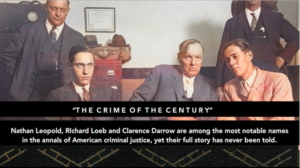PUBLISHED SEPTEMBER/OCTOBER 2021
answer by
Rocky Lang, veteran of the motion picture and television industries --

Rocky Lang
Take a shot at getting your book to Hollywood using the tools outlined in this article.
The number one question authors ask me is, “How can I get my book made into a movie?”
There is no one answer for that, but there are ways to give yourself a better chance. We are living in a time where intellectual property is king. Studios, networks, and cable companies are all looking for preexisting material, which means your book is a piece of intellectual property.
It is estimated that there are between 600,000 and 1 million books published each year in the United States. Fifty percent of those are self-published efforts. So, how do you cut through the noise? How do you break out? How do you get anyone to pay attention to your work? The first thing you need to understand is that most executives and agents in Hollywood have the attention span of a gnat and are not looking to increase their workload with an unknown author. The key here is to learn how to synthesize your book into a logline, synopsis, and verbal pitch. Secondarily to that, we will discuss more advanced tools, such as the lookbook and the sizzle reel.
The idea here is to figure out a way to tell someone about your book in a short and concise manner and use various tools that will help you on many levels. These tools will help you secure an agent; they can help that agent find a publishing deal; and they can help you get the attention of studio executives, producers, and film executives. The intention is to make it easy for the reader/evaluator to get a quick introduction to your work in the hopes that they want to read it.
The Logline
The logline is usually one or two lines that are eyeballgrabbers for your book. For many authors, this is daunting, as they think, “How the hell am I going to explain my 400-page book in a few lines?”
Here are the three main ingredients that generally (but not always) go into a logline:
- Who is your interesting character?
- What does this character want?
- What is the big obstacle in their way?
For example:
Silence of the Lambs: A young FBI cadet must confide in an incarcerated and manipulative killer to receive his help on catching another serial killer who skins his victims. If we break this down, the young FBI cadet and the killer are interesting characters. The cadet needs help, and the obstacle is she needs that help from the killer in prison. However, as there are no rules, all you need to do is create a logline that gets the reader's attention. Some other examples:
- Alien: In space, no one can hear you scream.
- The Godfather: The aging patriarch of an organized crime dynasty transfers control of his clandestine empire to his reluctant son.
- Nomadland: A woman in her 60s, after losing everything in the Great Recession, embarks on a journey through the American West, living as a vandwelling, modern-day nomad.
- Jojo Rabbit: A young boy in Hitler’s army finds out his mother is hiding a Jewish girl in their home.
The Synopsis
Recently, the publicist for an author contacted me and asked me to read her client’s book. I asked if she could send over a synopsis. They didn’t have one. This was an author I didn’t know who wrote a book that was languishing on Amazon, and the only thing I was faced with doing was reading the book, something I didn’t have time to do. I needed something to tell me more about the book in a page.
A synopsis is an essential tool in the writer’s arsenal. It allows the reader to get a quick idea of what your book is about. The synopsis often contains the logline at the top, followed by a description of the story, the main characters, and the basic act structure.
So, the logline will get their attention, and the synopsis will give them a little more to go on. Perhaps that will get them interested in reading your book.
Advanced Tools
As Hollywood is a visual medium, authors look for ways to visually get buyers/agents interested in their material.
The Lookbook/Deck
 Example of lookbook pages.
Example of lookbook pages.The lookbook, also known as a deck, is your story laid out in 10-20 pages in a visual form. In the lookbook, you use your logline and your synopsis accompanied by your main characters and arcs. There might be a page on what genre your story falls in and why it’s relevant. If it’s for television, what is the format? Pictured on this page are three examples from a lookbook that I have been using based on a book I optioned.
The Sizzle Reel
For those authors wanting to go the extra mile, creating a sizzle reel is an excellent way of getting buyers, producers, and agents to pay attention to your work. A sizzle reel is a one- to three-minute presentation on video using music, live action, or photos, coupled with narration, to visually show what your book is about. One of the most important things Dan Poynter (author of 130 books) told me is that half the job is writing the book, and the other half is selling it. This is particularly true for the self-published author. It also happens to be true to a degree even if you have a big house publisher, because even they can skimp on advertising and marketing dollars. At the end of the day, the burden of selling will fall on the author.
Getting your book to Hollywood might entirely rest on your shoulders, and using the tools outlined in this article, you will at least be able to have a shot.
Rocky Lang is a 40-year veteran of the motion picture and television industries. He is also the author of nine books, including the bestseller Letters From Hollywood. He can be reached at rockylangconsulting@gmail.com and rockylang.com.
Learn more about this topic: